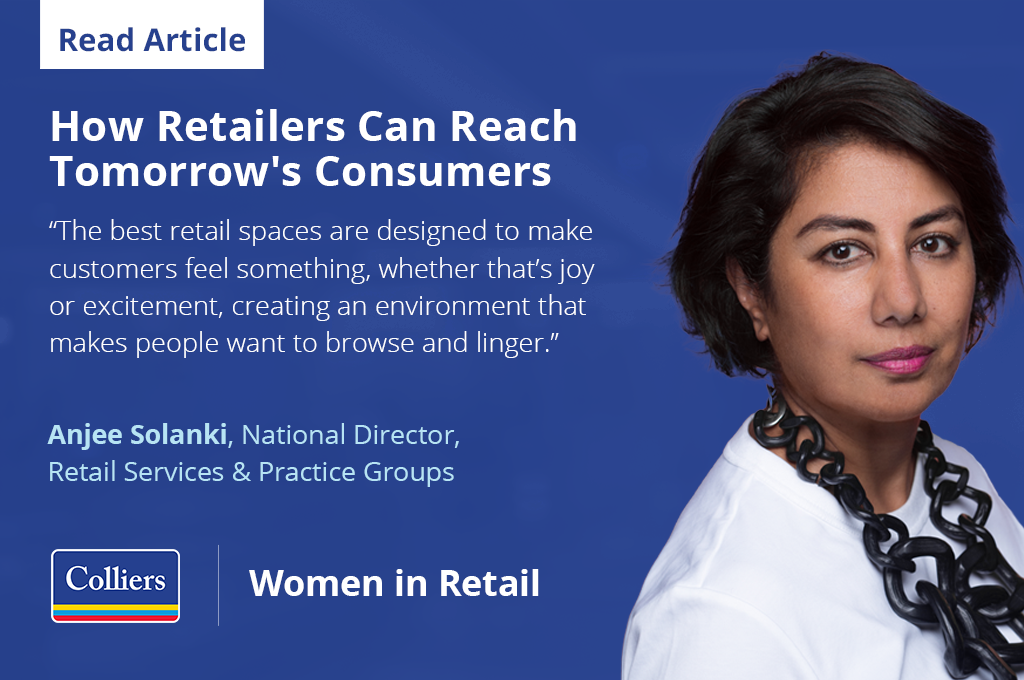The physical retail environment plays a critical role in how consumers behave. Shoppers are eager to return to stores, with 78 percent of U.S. consumers willing to shop more in-store than pre-pandemic. And with 42 percent of U.S. consumers admittedly missing being able to touch and feel products, retailers that pay close attention to what influences their space will have a greater chance of increasing profitability.
The best retail spaces are designed to make customers feel something, whether that’s joy or excitement, creating an environment that makes people want to browse and linger. So how will you know if your store concept is right for your brand and consumers?
Experiment With Experiential
When people walk into a store, they want to be surprised by an experience that irrevocably changes who they are, how they see the world, and how they see your brand. As people seek out “wow” moments, retailers need to consider how they can create experiences that win over customers, create conversations among friends, and have consumers engage with store staff.
Uniqlo, one of the pioneers of experiential retail, took over a remodeled factory in Paris for one of its flagships. The fashion retailer preserved the building’s origins and integrated that within the store’s design and layout, creating a museum-quality environment that offered consumers a rare look into the brand’s future retail concepts. This shopping experience was about eight years ago; I still remember it as if it happened yesterday.
Adjust Your Investments Based on Current Consumer Behavior
Retailers, and the industry as a whole, should take a page from the consumer playbook by pivoting their brands as quickly as those shoppers who have adjusted their spending habits. Consumers have adapted to the push and pull of pandemic restrictions, and shopping has become a social activity, not just a destination.
From an investment perspective, there’s much to consider about an asset’s entire lifecycle. It starts with determining whether that asset project is mixed-use or 100 percent retail, a lifestyle or a regional shopping hub. That’s really where the investor has to take a moment and ask, “Is our project aligned with what the consumer wants? Are there parallels that we’re drawing in terms of those affinities? And how can we make sure the prime project is at its highest and best use?” Sometimes it’s not fit for retail, and that’s OK, if investors take a holistic view of the project.
Consumer preferences and perspectives constantly change, and projects should align accordingly. We advise clients to review projects annually, or at the very least, every other year, and create a strategic road map matching their findings. Investors should know how long the average shopper spends in-store. Is the project well merchandised? Are consumers coming to shop, eat, hang out and stay for 15 minutes to 30 minutes?
Leverage Proprietary Data for the Greater Good
As an organization, you know more about your customers than anyone else. The amount of data available is immeasurable, but understanding its value can drive smarter decisions and uncover opportunities that may have otherwise gone unnoticed.
Collaborate with analysts and data scientists to overlay geographic data to enhance the brand experience. Imagine a room of experts and critical stakeholders excitedly trying to figure out what’s most relevant and a simple approach to maximizing it. The conversation can be powerful.
Whether it’s in site selection or evaluating a project, we should all know some metrics. Demographics, tapestry demographics which factor in socioeconomic variables, and psychographics are essential to identify personas. Buyer personas help guide and advise clients on top-ranking locations, selections based on geography, co-tenants, specific area characteristics, building, site, interior experience, and economics.
Social media is the latest metric integrated into site analysis to help landlords understand their projects, and why they may need to level up their merchandising in a particular market and ways to get there. One approach is engaging a data partner that provides constant real-time social media insight into how to drive consumers to shop at their location, with higher sales per square foot.
While there’s no one-size-fits-all approach to retail development, the overall mission of every retail project and its execution is to drive traffic, build brand affinity and increase revenue. It’s not enough to simply think outside the box anymore. We must pay attention to the details that create holistic experiences tailored to the consumer.
Originally posted in Women in Retail Leadership Circle’s Inner Circle Newsletter.

 Anjee Solanki
Anjee Solanki

 Aaron Jodka
Aaron Jodka Nicole Larson
Nicole Larson
